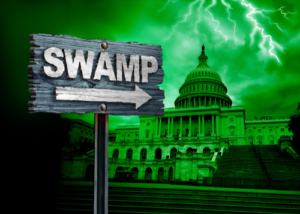Cleaning House: A Look into the Norms of the U.S. Attorney Appointments

In the world of U.S. politics, few topics ignite intense debate like the topic of U.S. attorneys and their appointments. Recently, former President Donald Trump announced his intention to “clean house immediately” by removing all Biden-era attorneys. This bold move has sparked outrage from the left, who deem it an ideological purge worthy of impeachment. However, this reaction begs the question: where was the outrage when Joe Biden enacted a similar strategy upon taking office in 2021?
The Standard Practice of Change
When President Biden assumed the presidency, he appointed 68 of the 93 U.S. attorneys while requesting their Trump-era counterparts to vacate their positions. Interestingly, the majority of these 68 attorneys resigned before Trump made his anticipated comeback, leaving only a small contingent behind. Such transitions are not merely the whims of political agendas; they represent standard practices throughout U.S. history. The double standards observed in media reactions to these maneuvers highlight the deeply entrenched partisan divisions that shape contemporary political discourse.

Trump’s first term was marked by a demand for the resignation of 46 Obama-appointed U.S. attorneys, a routine action within the context of political transitions. In 2009, Rep. Maxine Waters remarked on the necessity of resignation protocols in place to facilitate new appointments. Her sentiments echo throughout political history, with past presidents employing similar tactics to ensure their policies are championed by compliant legal leadership.
Historical Context Matters
Interestingly, the fervor of scrutiny that followed Trump’s initial actions starkly contrasts with the relative calm that enveloped President Obama’s strategic replacements. For instance, George W. Bush faced intense backlash in 2006 for dismissing just seven U.S. attorneys; yet Bill Clinton underwent a wholesale dismissal of all 93 U.S. attorneys when he took office—a decision that was accepted as a prerogative, even praised as a necessary strategic maneuver.

Clinton’s own wife, Hillary, acknowledged her husband’s actions as part of the governance playbook. In 2007, she revealed plans to replace all attorneys upon securing the presidency in 2008. So, why does Trump’s approach receive so much more backlash? This disparity underscores a fundamental hypocrisy in the political narrative where actions taken by one party are scrutinized, while similar actions from another party often receive less criticism.
The Bottom Line: A Call for Consistency
As we move forward, it’s crucial for us, the readers, voters, and engaged citizens, to recognize the cyclical nature of political practices surrounding U.S. attorneys. Every administration seeks to surround itself with individuals whose views align with its own. While media narratives may stir up emotions and opinions, understanding the historical context reveals a pattern of behavior that has persisted through the decades.
At Extreme Investor Network, we encourage our readers to scrutinize not just the actions of political figures but the narratives that shape our understanding. True insight comes from seeing beyond the headlines and grasping the bigger picture of U.S. politics, where the laws of change, continuity, and partisan reaction play out in the proverbial swamp of Washington, D.C.
Stay connected with us for more in-depth discussions that go beyond the surface. Join our community and be part of a dialogue that seeks not just answers, but understanding in the ever-evolving world of economics and politics.

